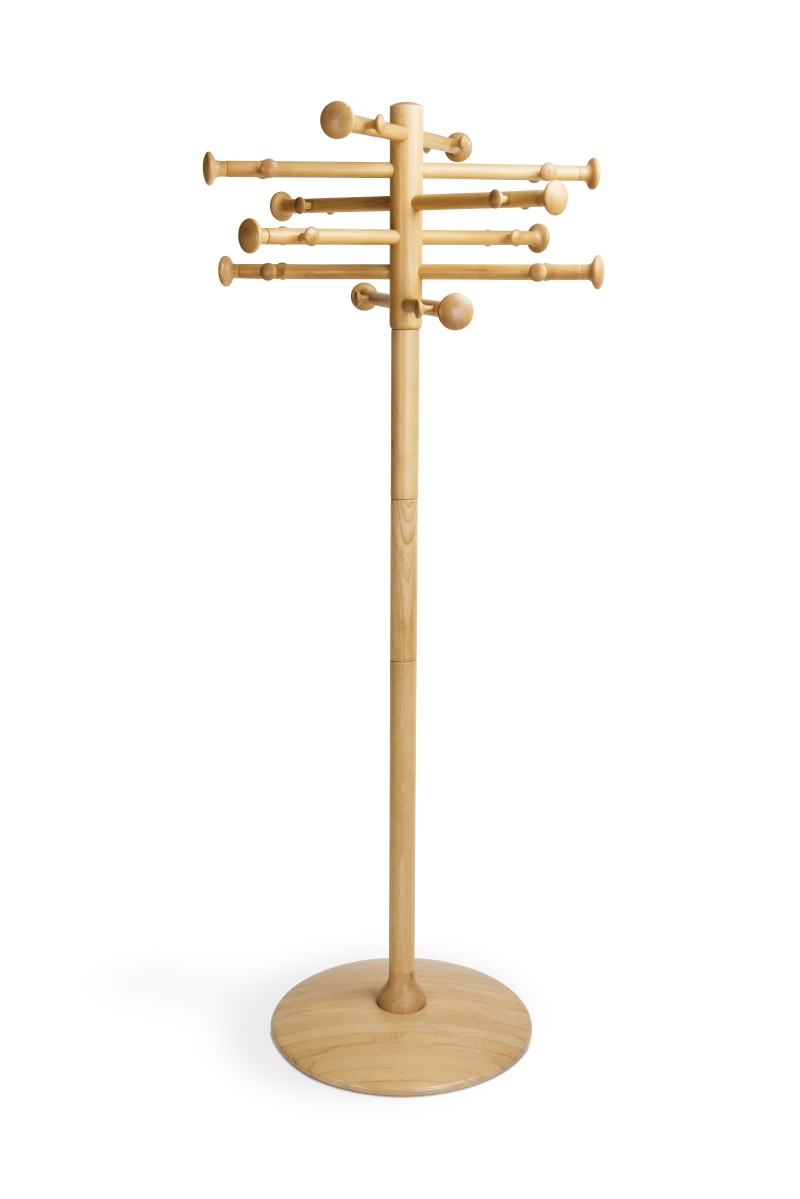Ein bis heute hergestelltes Möbel, das wie eine Plastik im Raum wirkt. Nanna Ditzel war, wie Verner Panton, eine dänische Designerin, die auch außerhalb ihrer Heimat arbeitete. Zwischen 1968 und 1986 lebte sie gemeinsam mit ihrem zweiten Ehemann Kurt Heide in London, doch davor entwarf sie meist zusammen mit ihrem ersten Ehemann Jorgen Ditzel zahlreiche Inneneinrichtungen, Möbel und Schmuck. Sie war neuen Materialien gegenüber sehr aufgeschlossen, doch als gelernte Tischlerin griff sie gerne auch auf den traditionellen Werkstoff Holz zurück.
Schenkung Friedhelm Wachs, 2017
2017.1325
en

